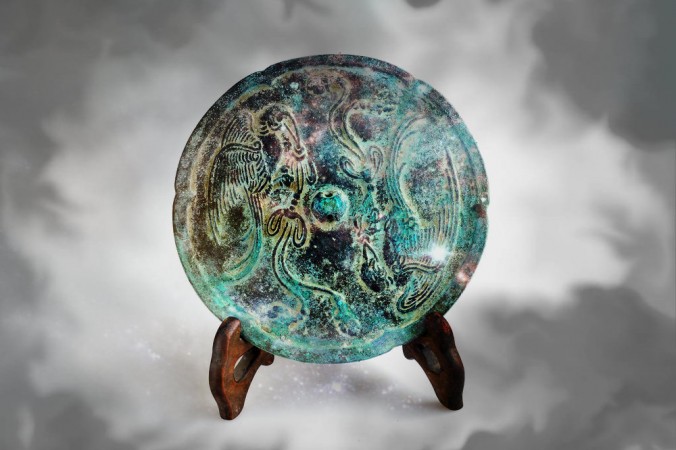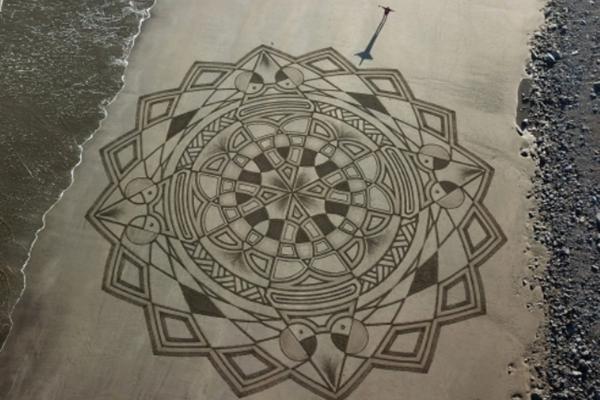Ancient Chinese “magic mirror”
China’s “Magic Mirror”.
For more than a thousand years, a rare type of Chinese artifact has made scientists scratching their heads and scratching their ears. It is a polished bronze mirror with a pattern cast on the back. The polished surface looks normal and can be used as a makeup mirror.
But when a bright light is shined on a mirror and the reflected light is hit on a surface, the reverse decorative pattern mysteriously appears in the projected reflection, as if the solid bronze mirror had become a mirror. should be transparent.
Magic Mirror Explanation
The Chinese name for these mirrors is t’ou kuang ching, which literally means “mirror that transmits light”. In English, they are known by various names such as “transparent mirror” or “magic mirror”.

The mirror made scientists “rub their heads and scratch their ears”. (Photo: Amusing Planet).
The art of making magic mirrors can be traced back to the Han Dynasty (206 BC – 24 AD). The secrets lasted until the 8th and 9th centuries, for there was a book titled Notes of Ancient Mirrors, published in the 800s, containing these secrets. This book is now lost.
Two hundred years later, magic mirrors are a mystery even to the Chinese. In the fascinating work The Dream Pool Essays by Shen Kuo, 11th-century Chinese writer and statesman, Shen Kuo describes three magic mirrors in his family heirloom. Even at that age, Shen Kuo still struggles to find an explanation for how the mirror works.
The most popular theory is that there are slight variations on the mirror surface corresponding to the pattern on its reverse side reflecting light differently. This causes an image to be formed when light is reflected from a surface. These variations, as Shen Kuo suggested, are too small to be seen with the naked eye.

Small variations in the surface of the mirror are thought to cause reflections. (Photo: Amusing Planet).
The researchers believe that a combination of casting and polishing methods caused these variations to form. According to a study, mirrors are manufactured by pouring molten copper into a patterned mold on the back of the mirror.
The front surface is then polished to a convex mirror. During the polishing process, parts of the mirror that are thinner than the rest (due to the design on the back of the mirror) will bend slightly inward while under less shaving force than the thicker parts. When the pressure is removed, the thinner layers bounce back as slight protrusions on the reflective surface, causing the pattern on the back to be reproduced on the front.
Another theory is that, after the mirror is polished, it is heated causing the thinner layers to expand and become slightly convex, thus scattering the reflected light in these areas and creating the image. The mirror is cooled immediately in water after heating for a permanent change.
at Blogtuan.info – Source: danviet.vn – Read the original article here



